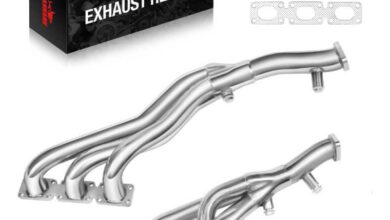Data Security Tips When Selling Used IT Hardware

Data breaches from poorly erased IT equipment can destroy companies through big fines and lost customer trust. Companies must completely erase data from their IT equipment before selling it to protect sensitive information.
Your hardware disposal needs multiple layers of protection. The process has proper backup procedures that follow the 3-2-1 rule, verified data destruction methods, and data destruction certificates. Software-based solutions and hardware destruction methods each give unique benefits for different storage media types.
This piece gets into key security measures, proven erasure techniques, and reliable ways to sell used IT equipment while staying compliant. You’ll learn to protect your sensitive data and get the best value from your used hardware through secure disposal methods and proper preparation.
Understanding Data Security Risks When Selling IT Hardware
Selling used IT equipment creates major security risks if you don’t clean the data properly. Companies that get rid of hardware without removing data completely leave sensitive information available to new owners or hackers. Recent stats show that 61% of companies reported experiencing a third-party data breach—this number jumped 50% in one year and tripled since 2021.
Common Data Breach Scenarios from Sold Equipment
Data breaches often happen because companies don’t dispose of IT assets correctly. Stolen or lost storage devices pose real threats to business security, as confidential data can end up in the wrong hands. Even equipment that looks broken might still have data that someone can recover if it’s sold or donated without proper cleaning.
Here’s how data usually gets exposed from sold equipment:
- Incomplete data wiping: Just deleting files or doing a quick format doesn’t permanently remove data. Anyone can recover it with basic software tools.
- Outdated storage media: The year 2016 saw 4,149 cybersecurity breaches publicly reported. These breaches exposed over 4.2 billion records, and many happened because storage media wasn’t cleaned properly.
- Third-party vendor mishandling: IT asset disposition (ITAD) providers without proper certification might skip secure data destruction steps, which creates big security holes.
- Hidden data repositories: Data breaches affect information stored in digital ‘clouds’ 82% of the time. This shows how companies forget about data copies in different places.
Hackers also use various methods to get data from secondhand equipment. Content Management System (CMS) attacks made up 46% of breaches, while backdoor access caused 51%. These numbers show how systems can be compromised if equipment changes hands without proper cleaning.
Financial and Legal Consequences of Data Leaks
Data breeches cost U.S. businesses an average of USD 4.88 million, according to IBM’s 2024 Cost of Data Breach Report. This represents a 10% jump from 2023. Small and mid-sized businesses face an average cost of USD 2.65 million, which can be devastating.
The legal fallout hits hard too.
State attorneys general take action against companies after data breaches. Acer Service Corporation paid USD 115,000 to settle with New York’s Attorney General after exposing over 35,000 credit card numbers. Trump Hotel Collection also paid USD 50,000 after hackers got hold of more than 70,000 credit card numbers.
Companies also risk class-action lawsuits from people affected by breaches. Legal experts note that “not only regulatory consequences, breaches may lead to a variety of private suits”. Shareholders might sue too if the breach hurts stock prices.
Federal agencies hand out big penalties. AT&T paid USD 25 million to settle an FCC investigation about leaked customer information. Morgan Stanley faced a USD 1 million penalty from the SEC for failing to protect customer’s personal information.
Lost business and post-breach response work cause 75% of the increase in average breach costs. The damage to reputation can last forever, with research showing that retail, finance, and healthcare companies lose up to one-third of their customers after a breach.
Industry Compliance Requirements
Companies must follow specific rules to handle data when selling used IT equipment. Several data protection laws require secure data erasure before getting rid of hardware:
Health Insurance Portability and Accountability Act (HIPAA) makes healthcare organizations create policies that make information unreadable and impossible to recover. Breaking these rules leads to heavy penalties, as shown by Advocate Health Care’s USD 5.55 million settlement with HHS for HIPAA violations.
General Data Protection Regulation (GDPR) affects companies selling to European Union countries. GDPR violations can cost up to 4% of annual global turnover or 20 Million Euros, whichever is higher.
The Fair and Accurate Credit Transactions Act (FACTA) requires proper destruction of personal information during IT asset disposal. Companies that don’t follow these rules face serious legal and regulatory consequences.
Businesses selling used IT equipment need to know that careless disposal of IT assets puts data protection and privacy at risk. Working with trusted companies like Big Data Supply that offer secure data erasure services helps manage these compliance requirements.
Essential Preparation Before Selling Your IT Equipment
A secure and profitable IT equipment sale needs proper preparation as its foundation. Your devices need systematic preparation before listing them with trusted vendors like Big Data Supply. This approach will give a better return on investment and data security. The preparation matters, whatever you plan to sell used IT equipment locally or through specialized asset disposition companies.
Creating a Complete Inventory
A full inventory of all IT assets scheduled for disposal gives you better visibility and control. This inventory does more than just document – it becomes a strategic tool that helps with financial planning, compliance, and security management.
A well-laid-out inventory should have:
- Simple identification: Record device name, model, brand, and category to filter and organize easily
- Financial details: Document purchase price, purchase date, and warranty information to know value and replacement needs
- Condition assessment: Note current operational status (in use, needs repair, decommissioned) to pick right disposal methods
- Location tracking: Mark where each asset is stored to prevent misplacement during disposal
This detailed documentation protects against theft, supports insurance claims, and helps potential buyers. Organizations can operate better and meet audit requirements with proper records.
Backing up Critical Data
Data backup is vital before any erasure procedures begin. Dell states that businesses must “back up the data on the hard drives and any other storage devices in the products” before shipping items for trade-in. This step prevents permanent loss of valuable information during disposal.
The quickest way to back up includes:
- Using multiple storage options like external drives, USB storage, or secure cloud services
- Checking that serial numbers, usernames, and passwords for registered applications are saved for reinstallation
- Creating multiple copies—one backup won’t protect enough against data loss
Backup experts point out that at least one in five people has never backed up data. This risky behavior can hurt organizations disposing of IT assets with sensitive information.
Documenting Serial Numbers and Specifications
Recording detailed specifications and serial numbers brings major benefits when selling used IT equipment. Serial numbers work as unique identifiers for individual items in an organization’s asset pool.
Detailed serial number documentation helps with:
- Theft recovery: Serial numbers help authorities find and recover stolen equipment sold to resellers
- Insurance verification: Serial numbers prove ownership for insurance claims after disasters
- Warranty management: Manufacturers need serial numbers for warranty service on covered equipment
Technical specifications should go into a secure database along with photographed serial numbers. The specs should list processor details, storage capacity, memory configurations, and unique features that affect value.
Some organizations use tracking systems that log each item’s complete lifecycle. One expert notes, “if organized well and documented correctly, each item will be tracked throughout its journey, leaving a comprehensive log of everywhere it has been”.
Without doubt, good preparation before selling used IT equipment to companies like Big Data Supply protects your organization and maximizes asset value. This systematic approach builds the foundation for secure data erasure procedures covered in later sections.
Conclusion
Data sanitization is the life-blood of secure IT asset disposition. Security is paramount for all organizations; think firewalls, strong passwords, and regular updates. These range from full inventory management to verified data destruction before equipment goes to new owners. Protecting your sensitive information and getting the best value for your old hardware? That’s what professional IT asset disposition services do.
Losing control of your data can be financially and legally devastating. The impact on a company’s bottom line and reputation can be severe.
Sanitizing correctly is a must. Companies should document their asset disposition process steps. They need to keep destruction certificates and team up with certified partners who know regulatory requirements.
The right ITAD partner determines security results and financial returns. Need help selling your IT gear? Big Data Supply has you covered with their complete solution packages. They can help with everything you need. They offer secure data erasure—at prices you’ll love—and handle everything expertly. Facing complex compliance requirements and wanting to recover value from retired assets? These specialists offer the solution. They provide the knowledge and support needed to make this happen.
Companies should work with experienced ITAD providers who follow strict security standards instead of risking expensive data breaches through poor disposal methods. Protecting your information, staying compliant with regulations, and getting the most from your IT budget—that’s what this strategy does.




